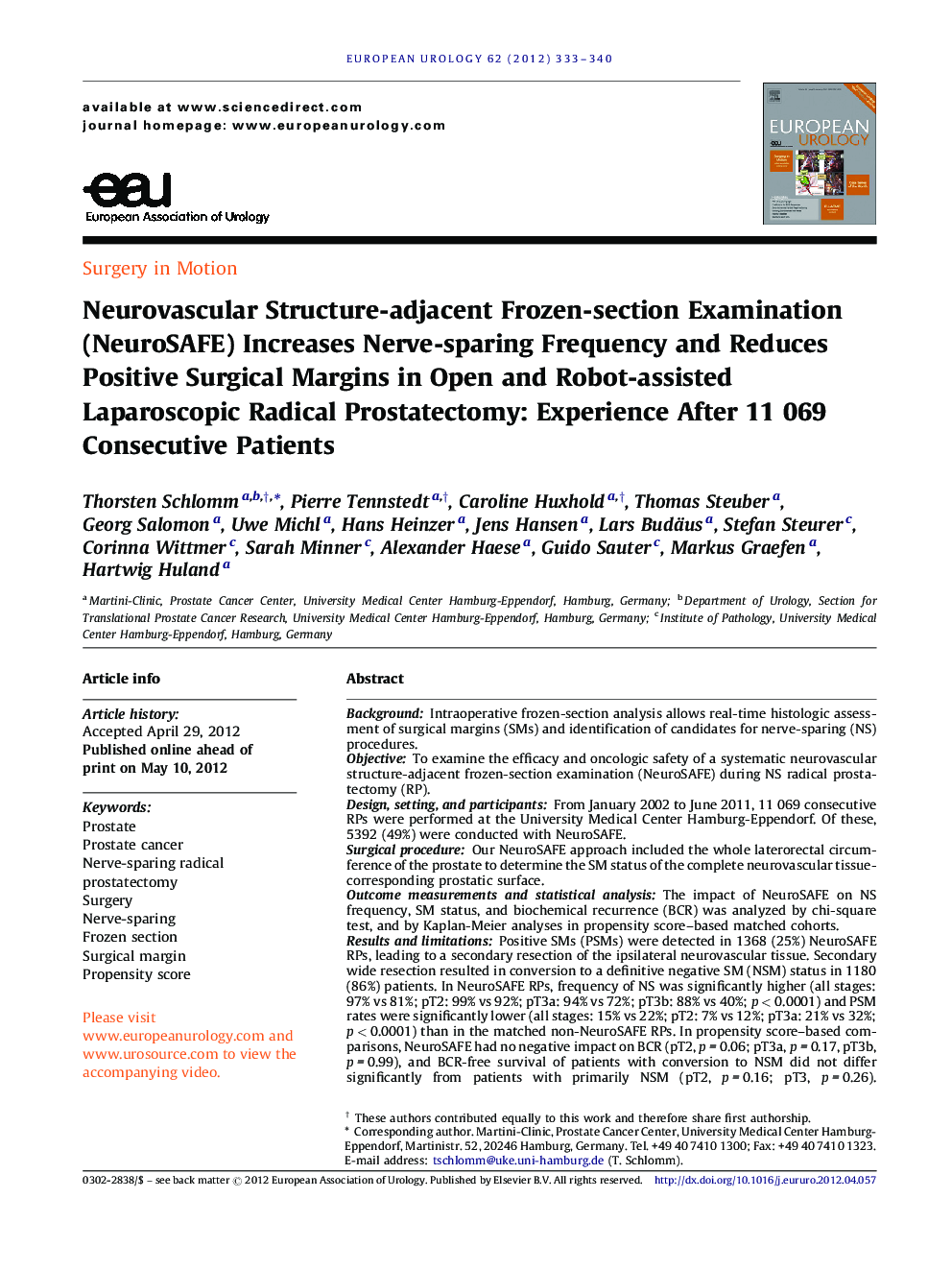| کد مقاله | کد نشریه | سال انتشار | مقاله انگلیسی | نسخه تمام متن |
|---|---|---|---|---|
| 3924060 | 1253088 | 2012 | 8 صفحه PDF | دانلود رایگان |

BackgroundIntraoperative frozen-section analysis allows real-time histologic assessment of surgical margins (SMs) and identification of candidates for nerve-sparing (NS) procedures.ObjectiveTo examine the efficacy and oncologic safety of a systematic neurovascular structure-adjacent frozen-section examination (NeuroSAFE) during NS radical prostatectomy (RP).Design, setting, and participantsFrom January 2002 to June 2011, 11 069 consecutive RPs were performed at the University Medical Center Hamburg-Eppendorf. Of these, 5392 (49%) were conducted with NeuroSAFE.Surgical procedureOur NeuroSAFE approach included the whole laterorectal circumference of the prostate to determine the SM status of the complete neurovascular tissue-corresponding prostatic surface.Outcome measurements and statistical analysisThe impact of NeuroSAFE on NS frequency, SM status, and biochemical recurrence (BCR) was analyzed by chi-square test, and by Kaplan-Meier analyses in propensity score–based matched cohorts.Results and limitationsPositive SMs (PSMs) were detected in 1368 (25%) NeuroSAFE RPs, leading to a secondary resection of the ipsilateral neurovascular tissue. Secondary wide resection resulted in conversion to a definitive negative SM (NSM) status in 1180 (86%) patients. In NeuroSAFE RPs, frequency of NS was significantly higher (all stages: 97% vs 81%; pT2: 99% vs 92%; pT3a: 94% vs 72%; pT3b: 88% vs 40%; p < 0.0001) and PSM rates were significantly lower (all stages: 15% vs 22%; pT2: 7% vs 12%; pT3a: 21% vs 32%; p < 0.0001) than in the matched non-NeuroSAFE RPs. In propensity score–based comparisons, NeuroSAFE had no negative impact on BCR (pT2, p = 0.06; pT3a, p = 0.17, pT3b, p = 0.99), and BCR-free survival of patients with conversion to NSM did not differ significantly from patients with primarily NSM (pT2, p = 0.16; pT3, p = 0.26). The accuracy of our NeuroSAFE approach was 97% with a false-negative rate of 2.5%. The major limitations of this study are its retrospective nature and relatively short follow-up.ConclusionsNeuroSAFE enables real-time histologic monitoring of the oncologic safety of a NS procedure. Systematic NeuroSAFE significantly increases NS frequencies and reduces PSMs. Patients with a NeuroSAFE-detected PSM could be converted to a prognostically more favorable NSM status by secondary wide resection.
Journal: European Urology - Volume 62, Issue 2, August 2012, Pages 333–340